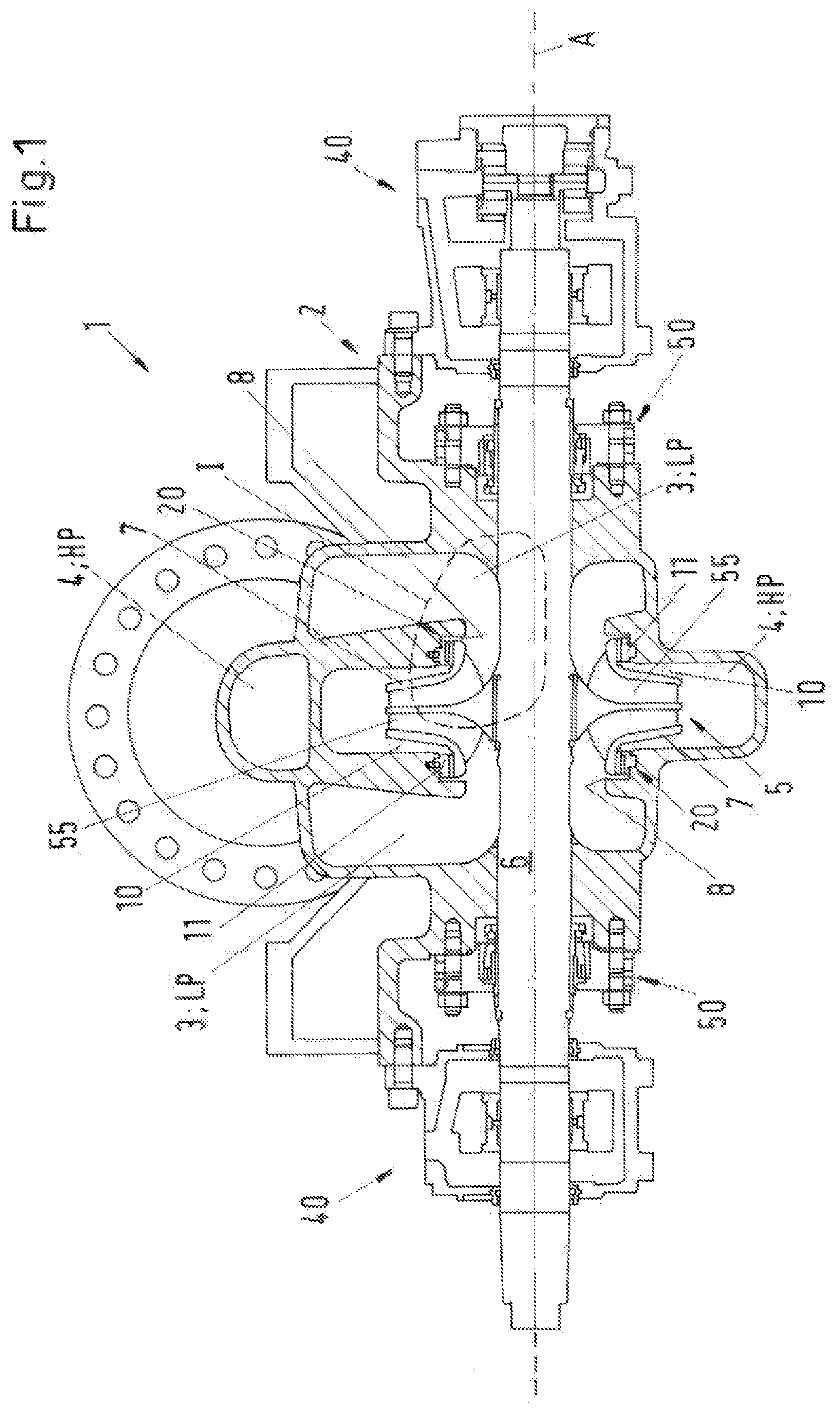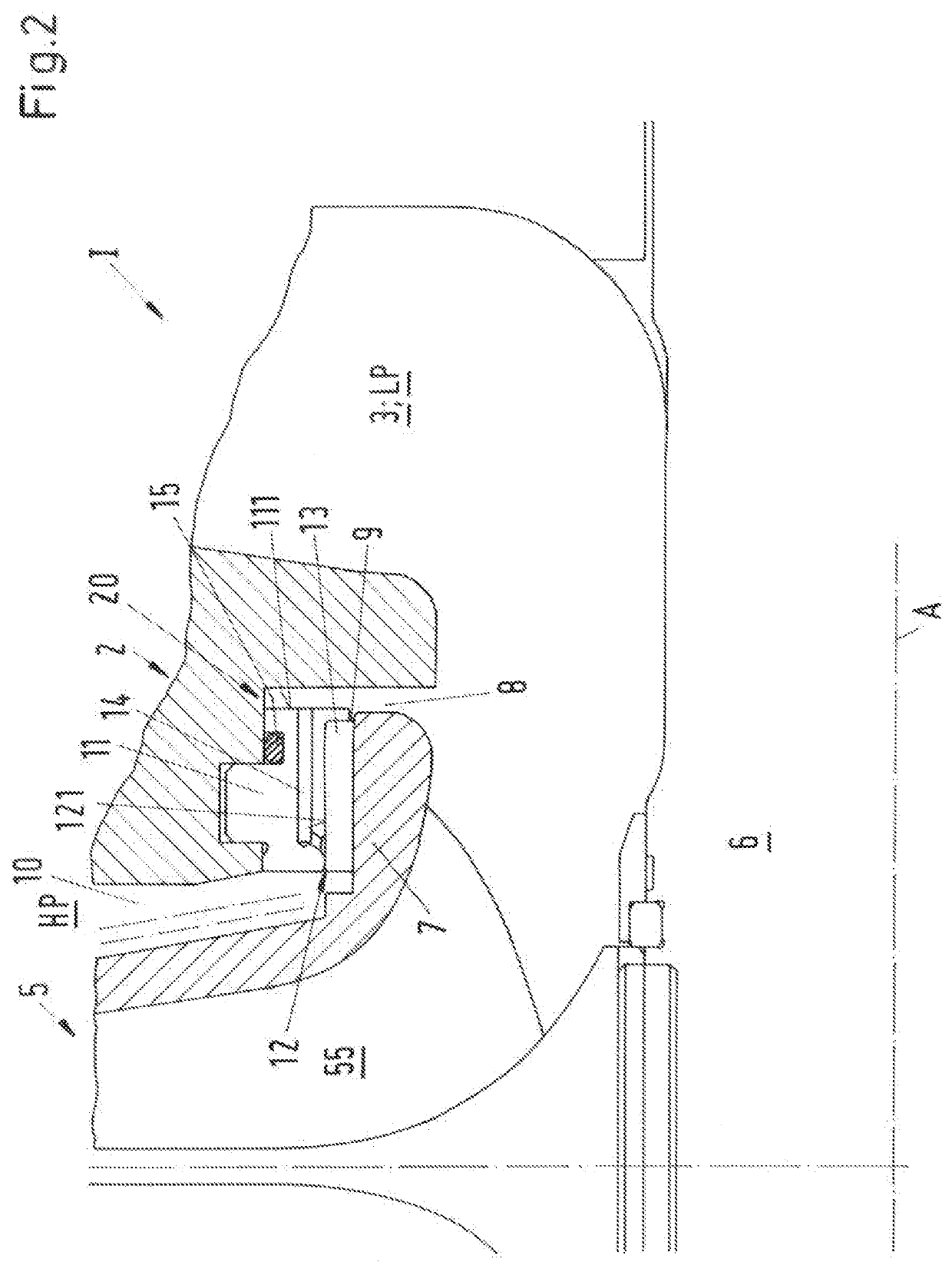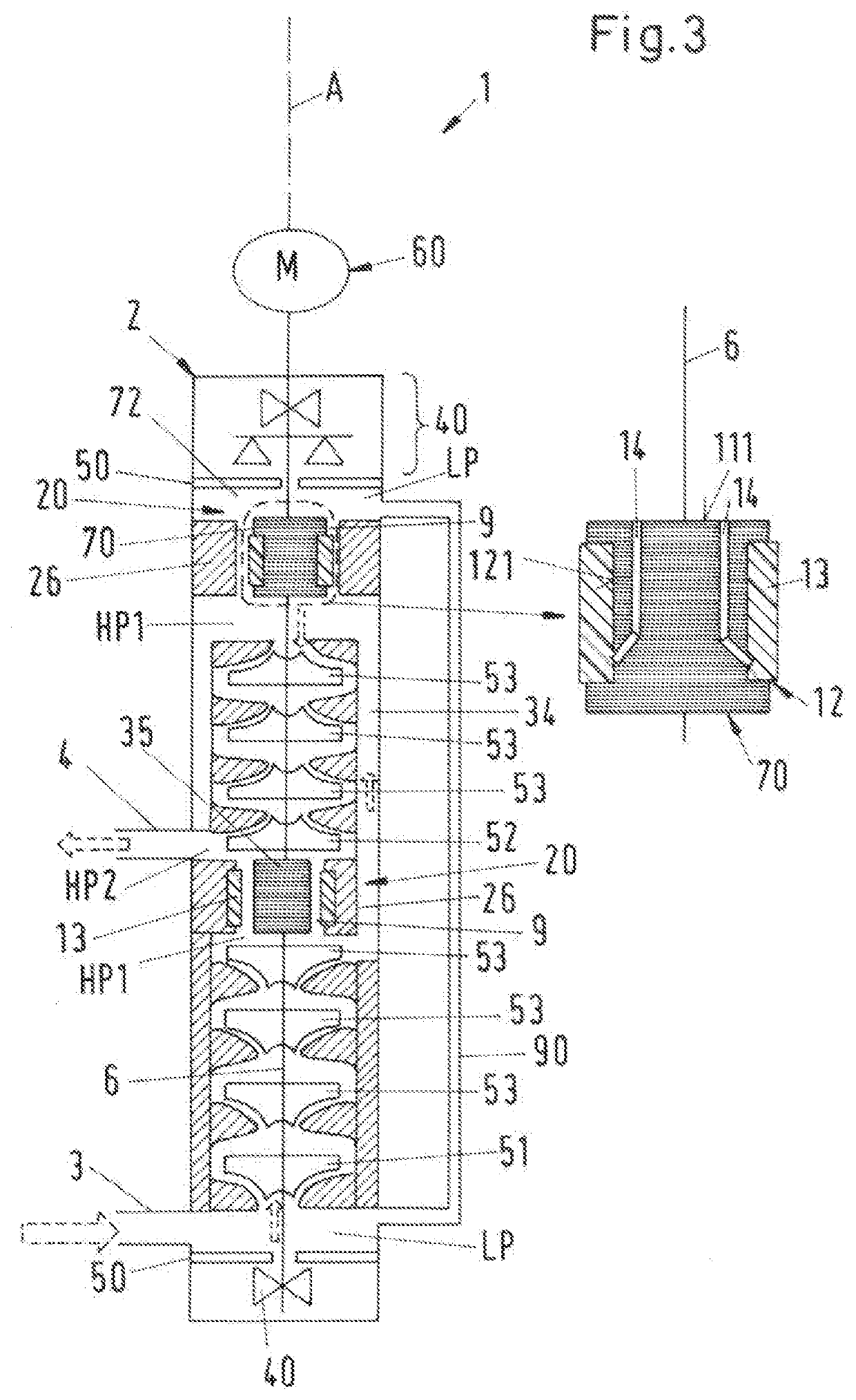Pump for conveying a fluid
a technology for conveying fluids and pumps, applied in mechanical equipment, machines/engines, liquid fuel engines, etc., can solve problems such as deformation or even collapse of inserts, reduce the efficiency of pumps, and so as to reduce the risk of physical contact between impellers and stationary parts, the effect of reducing the gap and reducing the wear of the inserts
- Summary
- Abstract
- Description
- Claims
- Application Information
AI Technical Summary
Benefits of technology
Problems solved by technology
Method used
Image
Examples
first embodiment
[0033]FIG. 1 shows a cross-sectional view of a pump according to the invention which is designated in its entity with reference numeral 1. FIG. 2 shows an enlarged representation of detail I in FIG. 1. The pump 1 is designed as a centrifugal pump for conveying a fluid, for example a liquid such as water.
[0034]In this first embodiment the pump 1 is designed as a double suction single stage centrifugal pump. This design is one of the preferred embodiments, which is in practice useful for many applications. Of course, the invention in not restricted to this design. A pump according to the invention can also be designed as a single suction centrifugal pump or as a multistage centrifugal pump or as any other type of centrifugal pump. Based upon the description of the embodiment shown in FIG. 1 and FIG. 2 it is no problem for the skilled person to build a pump according to the invention, that is designed as another type of pump, especially centrifugal pump, for example a single suction pu...
second embodiment
[0055]FIG. 3 shows a schematic cross-sectional view of a pump 1 according to the invention.
[0056]In the following description of the second embodiment of the pump 1 only the differences to the first embodiment are explained in more detail. The explanations with respect to the first embodiment are also valid in the same way or in analogously the same way for the second embodiment. Same reference numerals designate the same features that have been explained with reference to the first embodiment or functionally equivalent features.
[0057]The second embodiment of the pump according to the invention is configured as a multistage centrifugal pump 1. The shaft 6 is driven to rotate about the axial direction A by a drive unit 60, which comprises e.g. an electric motor. In other embodiments the drive unit 60 can also be arranged within the housing 2 of the pump 1.
[0058]The housing 2 of the pump 1 comprises only one inlet 3 through which the fluid enters the pump 1. Furthermore, the housing 2...
PUM
 Login to View More
Login to View More Abstract
Description
Claims
Application Information
 Login to View More
Login to View More - R&D
- Intellectual Property
- Life Sciences
- Materials
- Tech Scout
- Unparalleled Data Quality
- Higher Quality Content
- 60% Fewer Hallucinations
Browse by: Latest US Patents, China's latest patents, Technical Efficacy Thesaurus, Application Domain, Technology Topic, Popular Technical Reports.
© 2025 PatSnap. All rights reserved.Legal|Privacy policy|Modern Slavery Act Transparency Statement|Sitemap|About US| Contact US: help@patsnap.com



